Peter Ireland – 2 October, 2014
The enclosed spaces that rooms are came late as specific subjects for art. Before the 17th century they were merely containers for episodes of the human drama: stages for the latest production of religious stories, sites of genre narratives or backgrounds for the public relations of portraiture. The ennobling of simple space may have remained relatively rare, but it was an early sign of a significant change in Western art - a gathering movement of what came to be termed Realism earlier in the 19th century.
Whanganui
Samantha Matthews
Don’t quite belong
20 September - 3rd October 2014
Space in art. Your pulse racing yet? Probably not. Yet, the relationship between a notion implying a third dimension and art works usually confined to two is a fascinating one the more you think about it. Of course, you’d probably consider that space was sculpture’s natural province and any reduction to two dimensions from three is just another instance of art’s tomfoolery. It’s not that simple though. The location of sculpture in a space redefines that space by virtue of the work’s presence, and while perception of the space may be enriched by the intervention, that space qua space has been compromised in some way. The relationship may be celebrated, but the connection degrades the lesser partner - in much the same way the marriage declaration “man and wife” does.
Here’s a telling example of the distinction. In early 2008 Peter Robinson had a show entitled Soft rock baroque at his Wellington dealer’s, and the larger of the two rooms was almost totally filled by an enormous sculpture made of white polystyrene: just huge lumps of it almost touching the ceiling and festooned with chains, also made of polystyrene. There was barely room to walk around it, so it was impossible to remain unaffected by its truly extraordinary presence. It was supposedly a homage to Bernini’s 1651 Fountain of the Four Rivers in Rome’s Piazza Navona, and indeed probably was. But the room was no longer just a room: it had become a space ravished by sculptural art.
Eight years earlier, over 2000/2001, photographer Andrew Ross was commissioned by the same Wellington dealer to photograph the empty spaces of his premises immediately prior to a temporary re-location occasioned by the requirements of structural earthquake-strengthening. In Ross’s hands what had been a container for Robinson’s art became the artwork itself, not even needing Billy Apple’s subtle red-painted details to draw attention to its own individuality. Of course, Ross’s photograph was a memory of the space, not the space itself, but this apparent substitution is no silver medal. It’s how photography wins solid gold.
The enclosed spaces that rooms are came late as specific subjects for art. Before the 17th century they were, like Robinson’s dealer’s space, merely containers for episodes of the human drama: stages for the latest production of religious stories, sites of genre narratives or backgrounds for the public relations of portraiture. Just as the Dutch cleared the landscape of mythological and religious staffage in the 17th century, revelling in their flat featureless land and big volatile skies, some of their artists - the most notable being Pieter Saendredam with his austere, light-filled Protestant church interiors - similarly cleared interior views of staffage and other clutter. This ennobling of simple space may have remained relatively rare, but it was an early sign of a significant change in Western art - from staged tableaux to observations of what was there, a gathering movement of what came to be termed Realism earlier in the 19th century. Realism’s boisterous child was photography, and the medium’s advent saw an explosion in depiction of the enclosed spaces of rooms.
In his seminal 2003 essay Black Box written to accompany McNamara Gallery Photography’s exhibition The Interior: Laurence Aberhart (1), curator and critic Justin Paton drew a parallel beween the physical space of a room and the interior of the sort of camera Aberhart uses, thus referencing the perhaps unique relationship the medium has with such depictions, signalling a connection that no other visual art form quite has. Is this relationship explicable? Probably not. So it remains a mystery. But the weight of evidence is incontestable that the close relationship exists, continues to compel attention, and suggests a range of human needs and aspirations made all the more focused and memorable without the distraction of actual human presence. Some commentators seem to find virtue in observing that such depicted spaces are “empty” - for instance, with regard to much of Laurence Aberhart’s work, still - when in fact the images are full to over-flowing with so many rich human associations that any portrayal of people would render the photography pointless. Art exists to enlarge perception, not confirm preconceptions.
Historically, the topic of the-room-as-subject is sourced in the often artless documentary tradition, part of an informal but nonetheless obsessive encyclopaedic project to catalogue the world in all its varied particulars, from the apparently familiar to the strangely exotic. Dr A C Barker, for instance, photographed his sitting room in early Christchurch, the bookshelves, the print over the fireplace bespeaking a colonial civilisation’s crude and shambolic foothold. Two to three decades later Alfred Burton was photographing the dark interiors of wharenui in the King Country, bespeaking a “foreignness” that a century and a half later is still largely intact.
The documentary tradition became artful, as it were, in the 1930s in Depression America, an almost vernacular response, perhaps, to the Modernist niceties of the contemporaneous New Objectivity movement in Europe. Walker Evans’ austere images of sharecropper domestic interiors have entered the canon and remain a benchmark for any documentary photographer working today. Photographers such as Gordon H Brown and Gary Blackman working here in the 1950s were certainly aware of Evans’ practice: Brown’s Christchurch student digs images and Blackman’s recording of Otago cribs are securely in that tradition.
Photography may have taken up art in those days, but wasn’t until the 1970s here that art started taking up photography, and despite advances in this process it’s still the case that what gets a higher profile are images that look more like art than photographs more firmly fixed in the medium’s own long and honourable tradition. Photographers such as Aberhart and Neil Pardington have two things going for them: firstly, they’re now established (which equals “safe bet”) and secondly, their fine interiors reference history in the former’s case and the elegancies of hospitals and museum storerooms in the latter’s. Emerging photographers such as Caryline Boreham and Fergus Cunningham have a harder row to hoe by that mere fact, to say nothing of some of their subject matter: respectively, the interiors of women’s prisons and those of decaying abandoned provincial hospitals. It’s the visual equivalent of Basil Fawlty’s caution “Don’t mention the War”.
This documentary history is Samantha Matthews’ whakapapa and inheritance. She’s a recent graduate of both Otago Polytechnic (2011) and AUT (2013), and last year exhibited her Master’s show Tensions back in her home town of Whanganui. Despite its research based origins it had little resemblance to the academic kapok all-too usual on such occasions, revealing an active eye and a discriminating intelligence, qualities apparently no longer included in the boxes to be ticked by our tertiary institutions in their quest for bums on seats. Tensions consisted almost exclusively of interiors, whereas Don’t quite belong includes only four out of a total of ten photographs, all of them Otago subjects stemming from her earlier time based in Dunedin.
In a revealing artist’s statement she admits she didn’t consider the Otago work for inclusion in her AUT Master’s show, but “These photographs were so important to my entire practice that no matter how hard I tried to move on from them post Masters, they kept hanging in my mind, telling me they wanted to be shown. So here they are.” This evidence that Matthews can trust her instincts, act on them, and not merely limit herself to the conceptual framework of research based practice is a hopeful sign indeed. The framework may make you qualified, but trusting in your instincts is what makes you an artist.
Matthews’ photographed spaces tend to be exemplars of the vernacular’s minimalism. Not the self-conscious Minimalism of art and architecture - where, in the latter’s case, style supersedes shelter - but an unconscious, continuing tradition of building where any embellishment is more a question of cost than an exhibition of taste. This chaste, even artless, approach to habitation is almost photography’s natural subject, the medium tending to prefer the ordinary and over-looked, as if in terms of human connection the impressive is less engaging than the endearing. Matthews may have begun feeling that these images didn’t quite belong, but in the act of their becoming familiar belonging is guaranteed. In photography it’s this transformation that’s supplying a third dimension.
Peter Ireland
(1) Republished in Aberhart, eds Gregory O’Brien and Justin Paton, Victoria University Press, Wellington, 2007, pgs 279-295
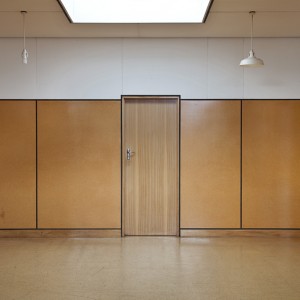

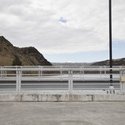
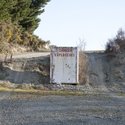
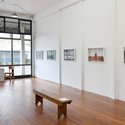
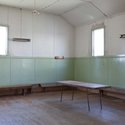
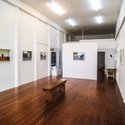
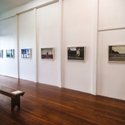
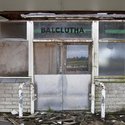
 Advertising in this column
Advertising in this column Two Rooms presents a program of residencies and projects
Two Rooms presents a program of residencies and projects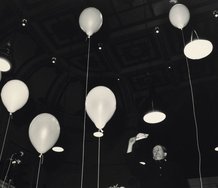
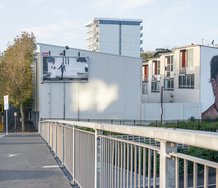
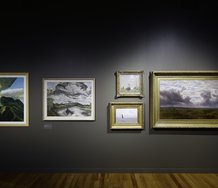

This Discussion has 0 comments.
Comment
Participate
Register to Participate.
Sign in
Sign in to an existing account.